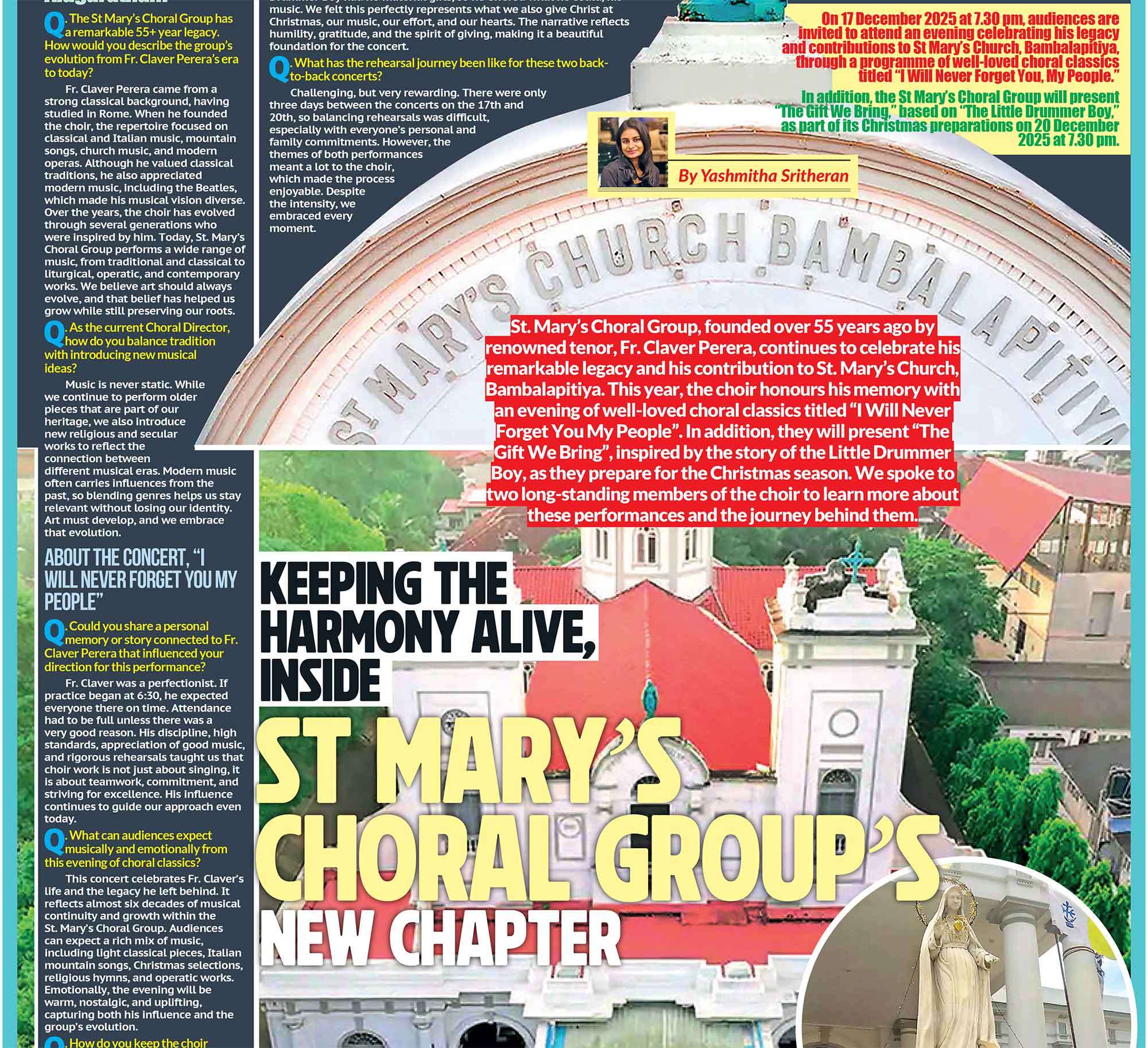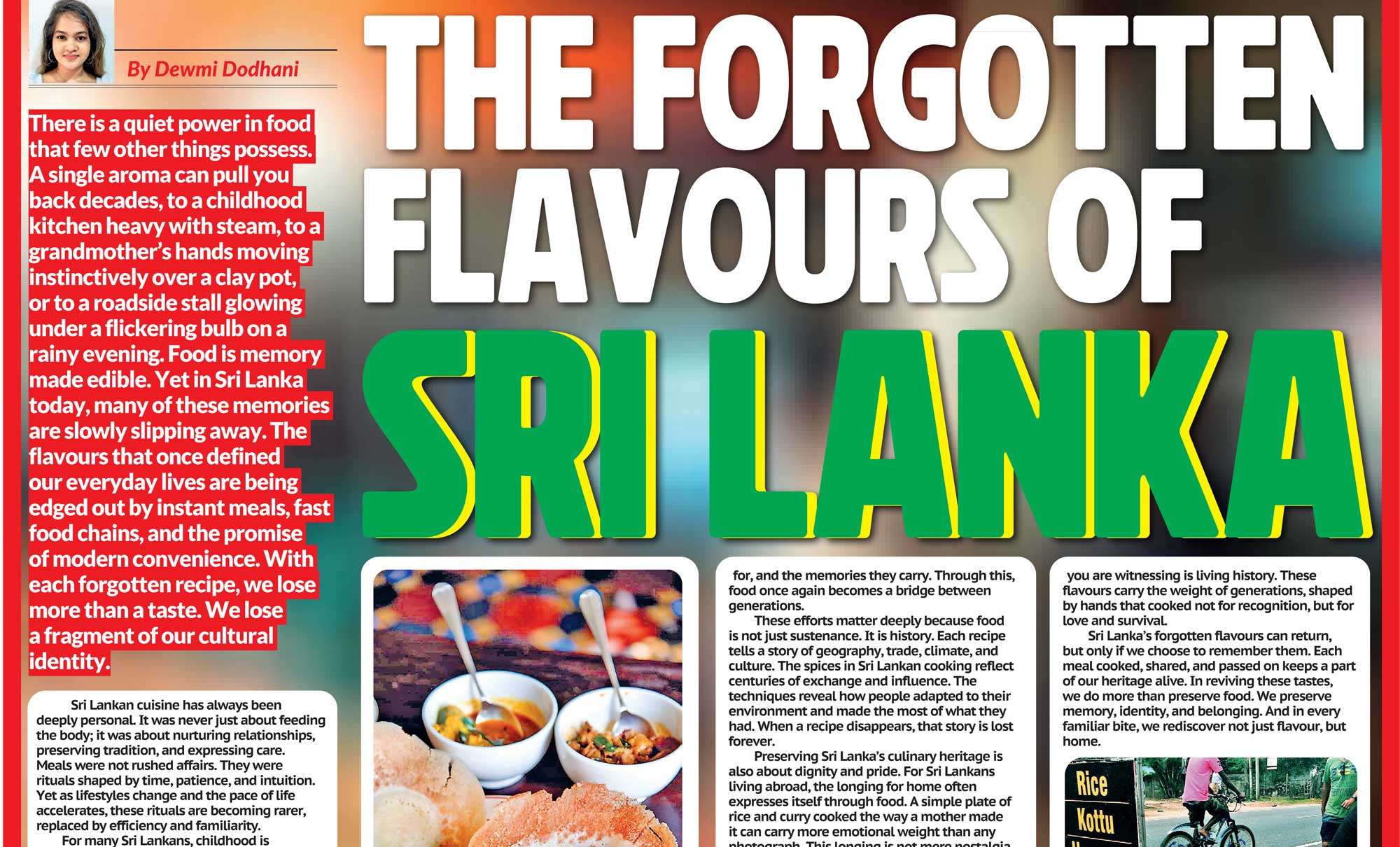
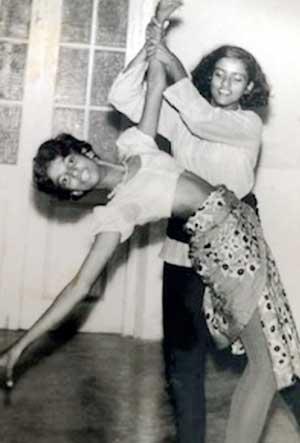 |
| Geethanjali and Thisula in 'Saradiel' |
Watching dancers perform an astounding piece of choreography elevates the mind and instils a sense of wonderment that cannot be explained. A yearning to develop one’s body to create beautiful shapes while using it to tell stories and express emotions is the reason that many of us follow this extremely difficult yet short lived career. It is a flame that burns within all of us who aspire to dance and create dances. Fostering a desire to create unique works by exploring the endless possibilities of movement remain with those like me even after our ability to demonstrate what we envisage in our minds has become difficult due to age and other issues. 3
In Sri Lanka there is a younger generation of dancers who are doing excellent and groundbreaking work. They are taking risks and extending the boundaries of movement by fearlessly addressing important subjects that the established choreographers dare not touch. Their movement vocabulary is unusual and somewhat disturbing, and this prevents them from being accepted by the status quo. Sadly, those in the mainstream often shun this diversity of movement, clinging possessively to their power rather than opening their hearts to new innovative voices.Whether original or inspired, ideas, shaped by influences from colleagues or mentors, mental snapshots of poses, movement sequences that awaken muscle memory, evocative music, cultural ties, and personal life experiences, all contribute to the rich palimpsest each choreographer draws upon as a foundation for creative invention. It is when these sources become challenging that many resort to falling back on hackneyed themes and crowd-pleasing material. Recent productions by the better-known choreographers and the major dance schools in Sri Lanka have highlighted this failure.
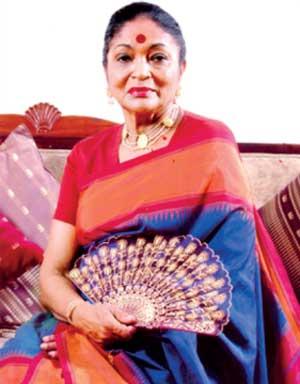 |
| Oosha Saravanamuttu |
Established dance companies rarely break from the constraints of tradition; this limits their range of movements and stifles originality. Within the teaching and learning of any codified dance technique – (be it Classical ballet, Kandyan or Latin American), constraints are often imposed by the dance genre itself, this is enforced implicitly through a shared history and tradition. These traditions often dictate how classes are taught, as well as what is taught. Resting on the laurels of past plaudits makes it easier to maintain control. They play safe and cater to audiences who are only after escapism wrapped in beauty, sequins, and anything that glitters. Dance is being dumbed down to satisfy a staid audience. Many choreographers tend to blow their own trumpet about the success of their shows. They abhor criticism and remain pleased with an audience who love the packaging and do not examine the content within. This mentality has led them to a creative graveyard.
As a twelve-year-old, I was mesmerised by the endless possibilities of movement and expression after witnessing a dazzling dance recital. It had a unique mix of joie de vivre and creativity that made me want to become a dancer. This fantastic concert was called ‘Kaleidoscope’ and was presented by Oosha Garten of Ballet in 1971.
Oosha Saravanamuttu (known to her students as Aunty Oosha) was not a conventional dance teacher by any means. Her classes were structured in an unusual manner. They began with fifteen minutes of limbering followed by a ballet barre for about another twenty minutes. Students would then proceed to centre-practice, during which she would teach a few classical ballet steps along with a variety of unconventional movements that combined elements of modern and expressive dance. To describe her contribution to dance, I borrowed a phrase that described the legendary Isadora Duncan. Oosha’s “teaching and performances helped to free ballet from its conservative restrictions and presaged the development of modern expressive dance.” This is exactly what she did at the height of her creative journey and there isn’t a better example of this than her show ‘Kaleidoscope.’
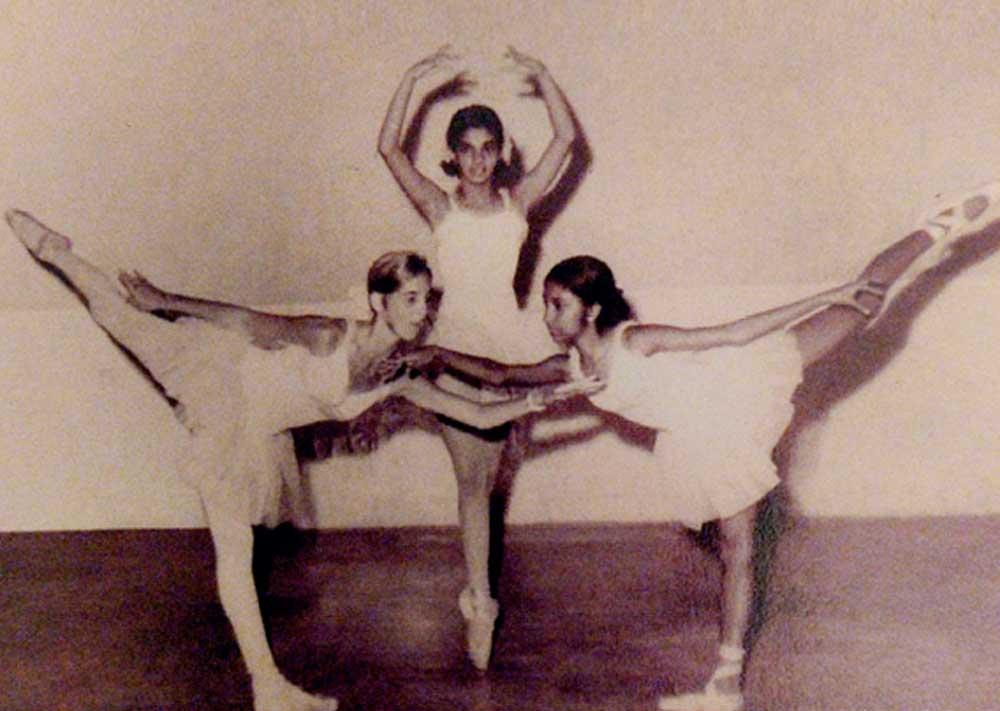
Pink
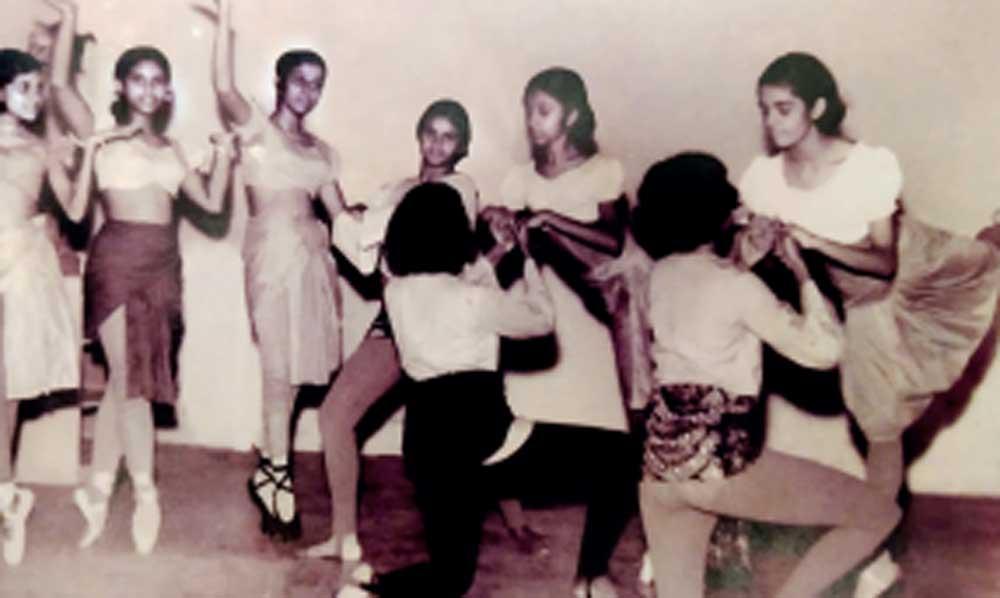
Village scene in 'Saradiel'
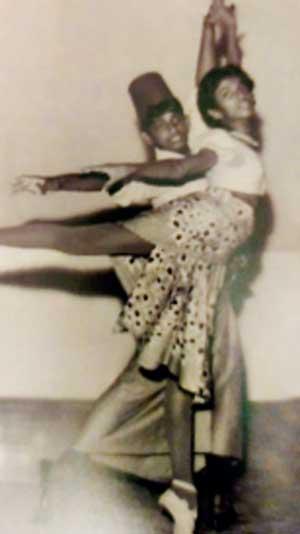 |
| Geethanjali Mendis and Paikiasothy Saravanamuttu in 'Saradiel' |
This show was divided into three parts. The first section focused on entertaining and engaging children using expressive free dance for the purpose of bringing familiar fairy tales to life. When the curtain went up, we saw a giant book which had been placed in the middle of the stage. An old woman who was a storyteller kept turning the pages one at a time, revealing illustrations of much-loved children’s stories. Each story was brought to life with dance and mime that thrilled the audience for whom it was meant. The story of Cinderella was the liveliest of these segments. Oosha’s son Paikiasothy, along with Rohan de Silva (the pianist) danced the parts of the ugly sisters with such conviction that it was unforgettable.
In the second section, Oosha took a bold step of recreating the story of a Sinhalese folk hero ‘Saradiel’ as a full-length ballet using a mixture of ad hoc classical ballet and modern dance. Localising the narrative of this ballet and using traditional costuming was completely unique. The corps de ballet of village belles was in cloth and jacket and some of the male characters wore sarongs. This added a valuable aspect of visual relatability making the story come alive to a local audience. Thisula Jayanetti performed the title role with great aplomb and Geethanjali Mendis danced the part of Saradiel’s lover Menacha, beautifully. Paikiasothy Saravanamuttu used his skills as an actor bringing great depth to the role of the merchant Abdul Cader - Menacha’s husband. Incorporated into the ballet was a caravan that is plundered by Saradiel and his gang, a riotous market scene which was enlivened when each of the stall holders did a dance that depicted their individual trades, this included bangle sellers, butchers, fish mongers, a snake charmer, villagers and many more. There was also the required love duet during which Saradiel and Menacha express their feelings for each other. Robin Stock, one of the few foreign students at the school danced the part of the British official who arrests Saradiel in the final scene. The teenagers in the audience were immediately drawn to this ballet and connected with it on a personal level. The costumes were created by the parents of those who participated. They exchanged ideas and came up with numerous ways that brought out the desired visual imagery. Appropriately chosen pieces of music that conveyed the moods and actions of the story was play by the classical pianist Lucille Dahanayake. Oosha infused her own brand of movement with motifs borrowed from our traditional dances and classical ballet to maximum effect.
In the third segment, Oosha used her senior students to showcase a series of items based on varied colours. By attaching an emotion that represented each chosen colour she created dances that expressed a mood or a feeling. This collection of dances was titled ‘Les Couleurs de la vie’ (the colours of life).
A scintillating piece of classical ballet opened this final section. Four couples danced in an item called ‘Young Love’ in which pink was used to depict innocence. Seeing tutus for the first time made the experience ethereal. The music used was mostly by Chopin mixed with a melody called ‘The sweetheart tree’ taken from the film ‘The Great Race’ This was followed by a dramatic duet depicting red. ‘Passion’ danced by Yasmin Boteju and Jimmy Peck. Arlene Peck played ‘Hernando’s Hideaway’ on the piano with her usual panache.
Oosha incorporated Spanish movements into her choreography bringing out a flavour of fire and sexuality. The next item was a solo danced by Kareena Delima. The colour was indigo representing ‘Sophistication.’ Silhouettes of dancers smoking cigarettes while walking around a central figure at the beginning of this piece gave it an aura of blues in the night. In a piece representing ‘Nature’ ten couples mingled and twined themselves evoking a sense of pastoral. They wore leotards and tights in shades of green and brown with leaves and stems in yellow appliqued diagonally across their torsos. After this, Pascal de Marion and Jimmy Peck performed a stunning pas de deux which was an exploration of ‘Opposites.’ It was appropriately costumed in black and white. The show ended with a dance based on yellow depicting ‘Youth and Joy.’ All her senior students danced in this piece which was set to Jimmy Osmond’s popular hit ‘Long Haired Lover from Liverpool.’ The uplifting atmosphere of this closing piece had the crowds applauding with the same exuberance that was displayed on the stage.
I left this show feeling so inspired that I joined her school the very next week.
You may wonder why I am referring to a concert that took place fifty-four years ago to highlight the dearth of creativity in Sri Lanka today. Prior to the influences of videos and social media apps, all a choreographer had to rely on was a knowledge of their craft. They worked out all this magic on a bare stage with home-made props and basic lighting. It took months to get a pair of pointe shoes from abroad. Pianists were in high demand simply because the use of recorded music was not yet the norm. Seamstresses spent days creating costumes. Tights and leotards had to be ordered from Bernard Botejus’ in Kohuwela. Most importantly, no one had the luxury of being able to watch a dance on a DVD to reproduce a specific sequence or a lift by using the slow-motion playback feature, they had to imagine it and work it out themselves.
After 1972, the availability of the Princess Tina ballet books made all of us delve into them in search of new poses and costumes that we could use in future performances. Imagination began to recede, and innovation took a back seat. As the years progressed, we were inundated with external influences that systematically decreased the creative process. Technology had made copying easier and experimentation unnecessary. What propelled Ooshas’ work during this period was her own confidence and imagination. Everything she presented on stage came directly from within. And that is a very hard act to follow.
I hope the next generation of dancers have the courage to follow their dreams in the same way as she did and tell their stories in their own voices.







